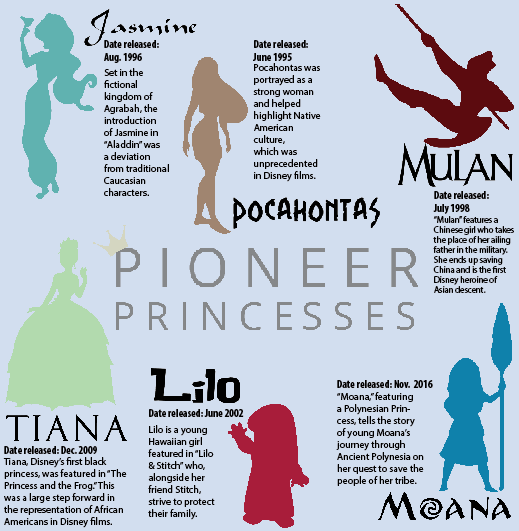Diversity in Disney
Disney takes progressive steps forward
October 23, 2018
Recently, media insiders such as Harper’s Bazaar have reported that biracial actress Zendaya may play the lead role of Ariel in Disney’s upcoming live-action remake of “The Little Mermaid.” While neither Zendaya nor Disney have commented on the rumors so far, some are upset due to the fact that Ariel is Caucasian in the animated film released in 1989.
In an interview for Marie Claire magazine’s September issue, Zendaya said that she purposely auditions for roles meant for Caucasian women, and that just by getting in the room, there is a chance she could change the directors’ minds. If Zendaya does, in fact, play the role of Ariel in the future film, many people will view this move as the film industry’s next big step toward inclusivity.
In the past, Disney has been known for producing movies that promote racist stereotypes, such as the portrayal of American Indians in “Peter Pan.” There was even controversy surrounding “The Princess and the Frog,” which features Disney’s first African-American princess. The 2009 film seems strange to some considering the fact that Tiana spends the majority of the movie as a frog. Darnell Hunt, director of UCLA’s Ralph J. Bunche Center for African-American Studies, said that although the movie wasn’t perfect, it was beneficial for young African-American girls to see a story revolving around someone like themselves.
Lately, we’ve seen a string of Disney movies with people of color (POC) protagonists such as “Moana,” “The Jungle Book” and “Coco.” According to Vanity Fair, between the years 2016 and 2018, 24 percent of the company’s live-action releases will feature ethnic minority leads.
“It’s important because it’s a way to spread awareness and break the boundaries that were previously set for past generations,” junior Betsabe Pardo said. “Before, it would [almost] be considered a crime to have any Disney princess be any skin tone other than [Caucasian]. It’s now a regular thing to see characters leading or otherwise be of a different skin tone or ethnicity.”
Many have noticed, both on social media and in real life, people celebrating their culture after having seen it represented in high profile productions.
“[These movies] give others confidence,” junior Saahithi Achanta said. “I saw social media blow up with praise because [the movies] embraced the culture and identity of communities that were [once] shoved aside by Hollywood,”
Thankfully, Disney has been getting better at representing more races, cultures and ethnic backgrounds. In 2016, the company released “Queen of Katwe,” in which all speaking roles were played by people of color, and the Disney and Marvel hit “Black Panther” has become the top-grossing superhero film of all time. Hunt said the success of this movie shattered all myths about what is marketable internationally.
“Extremely popular films with POC actors as main leads are incredibly powerful,” junior Isabelle Sheard said. “Representation like this matters because it helps people embrace and love their culture, wherever they may come from.”
Although traditionally Disney has not been known for diversity, the company has shown over the years that it is genuinely trying to improve its casting decisions, reevaluating the impact its movies and other productions will have on all viewers.
“Positive representation matters because it’s important to give people something or someone to look up to and be proud of,” Sheard said. “The world is a very diverse place, and how the media portrays this diversity can have a powerful impact on how people think. People need hope, and often times the media is a huge contributor to how much hope people can feel about themselves and the future.”


